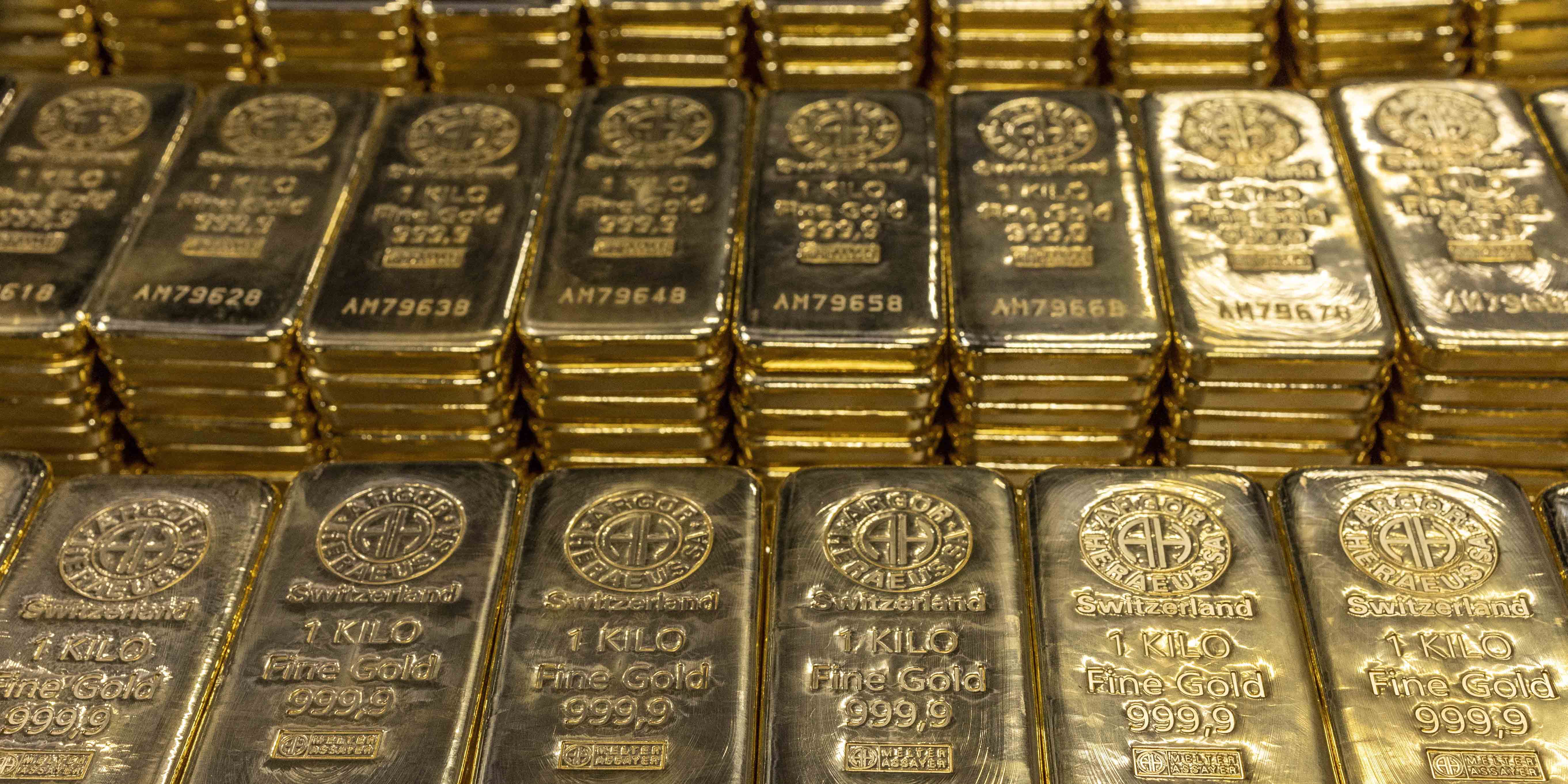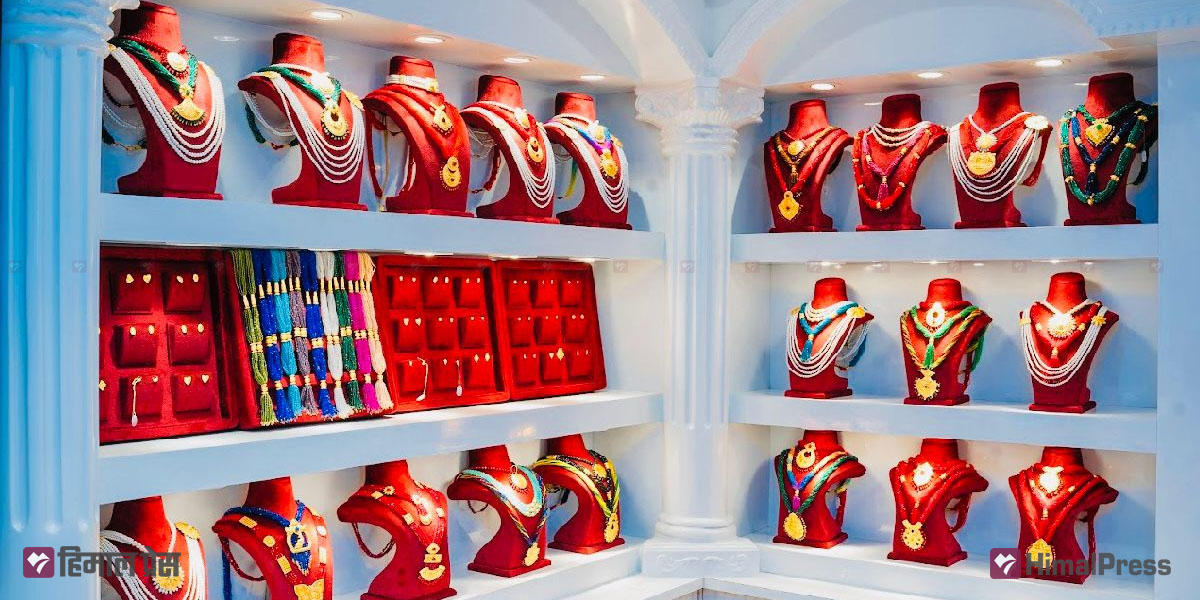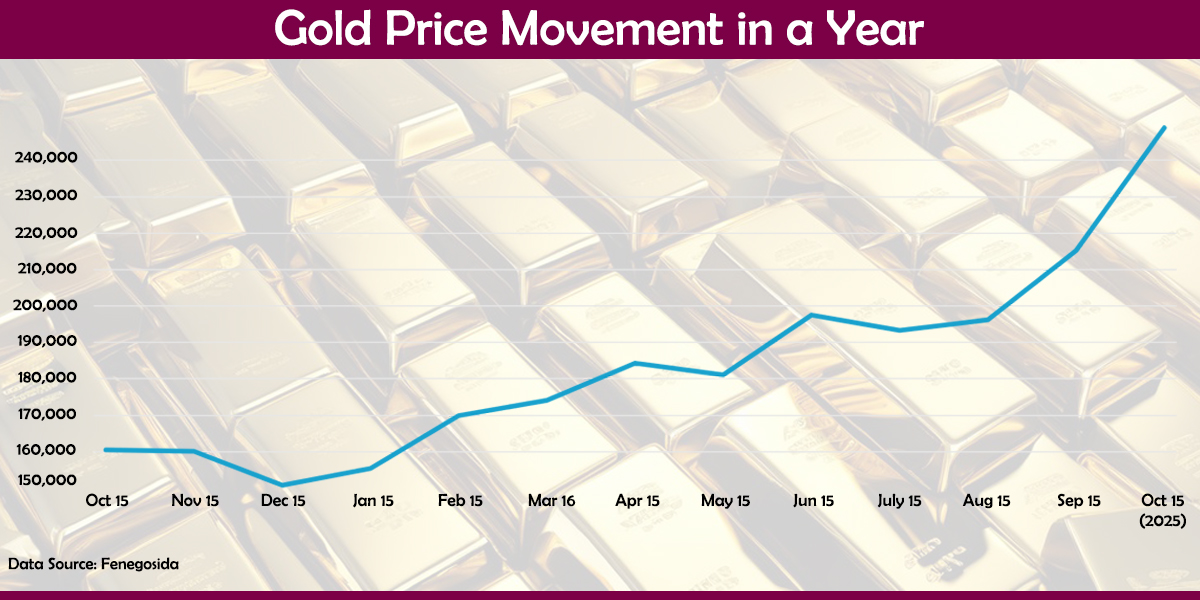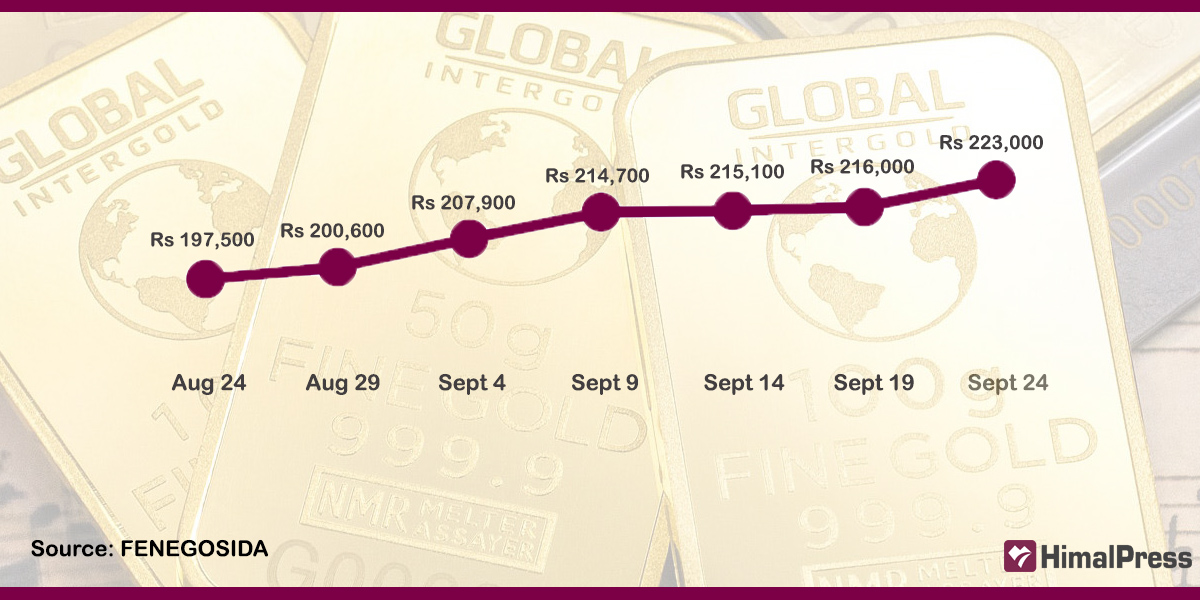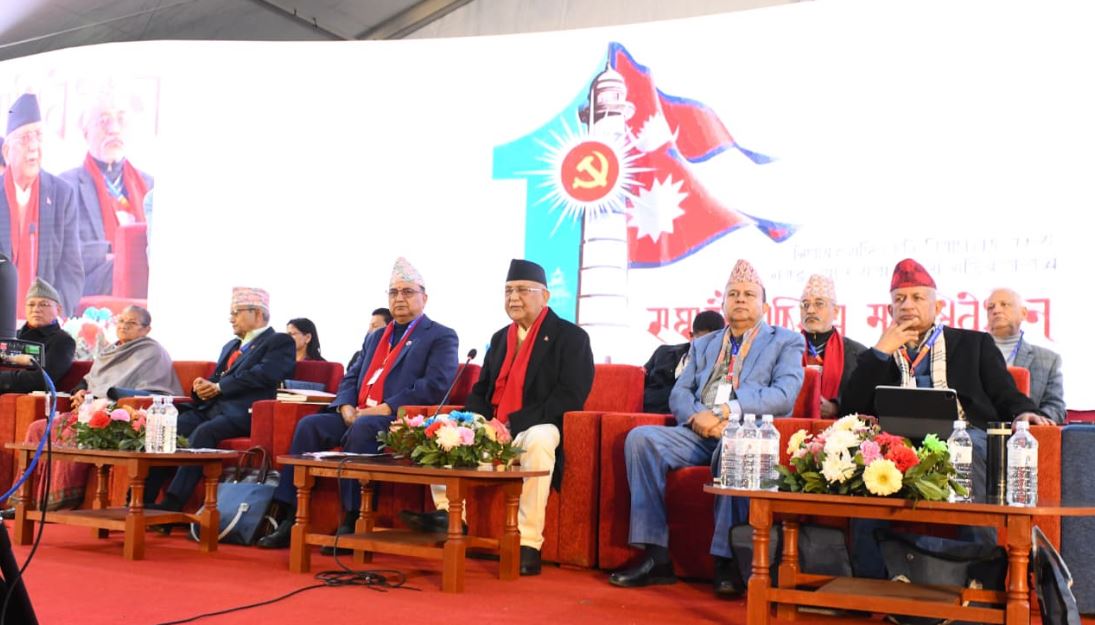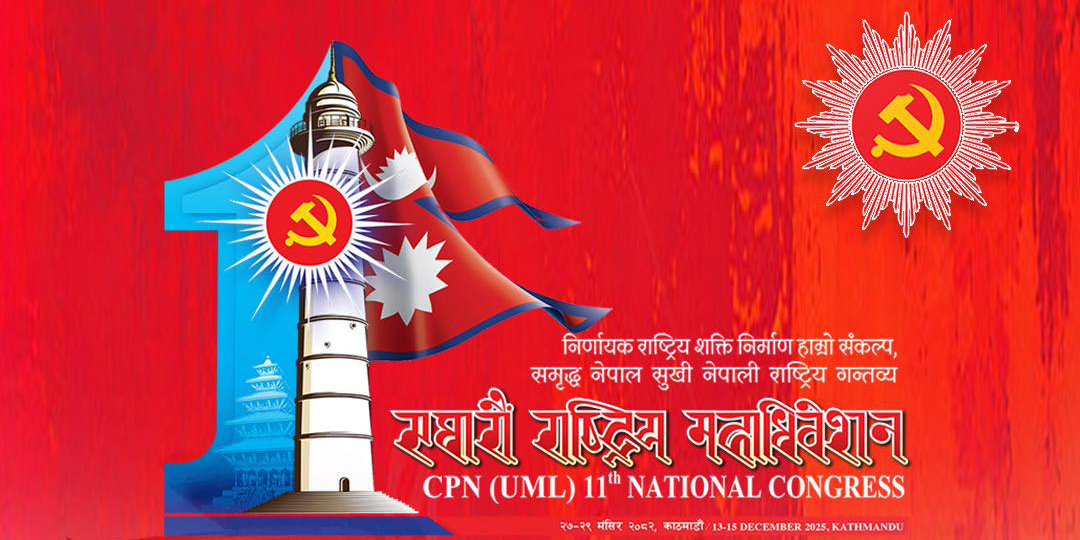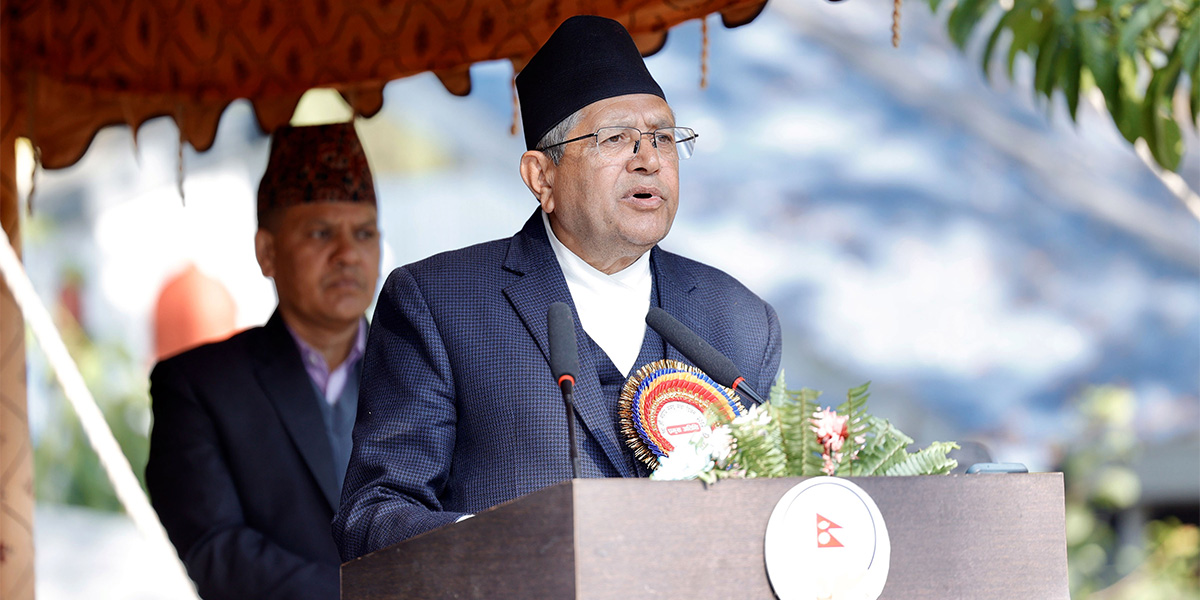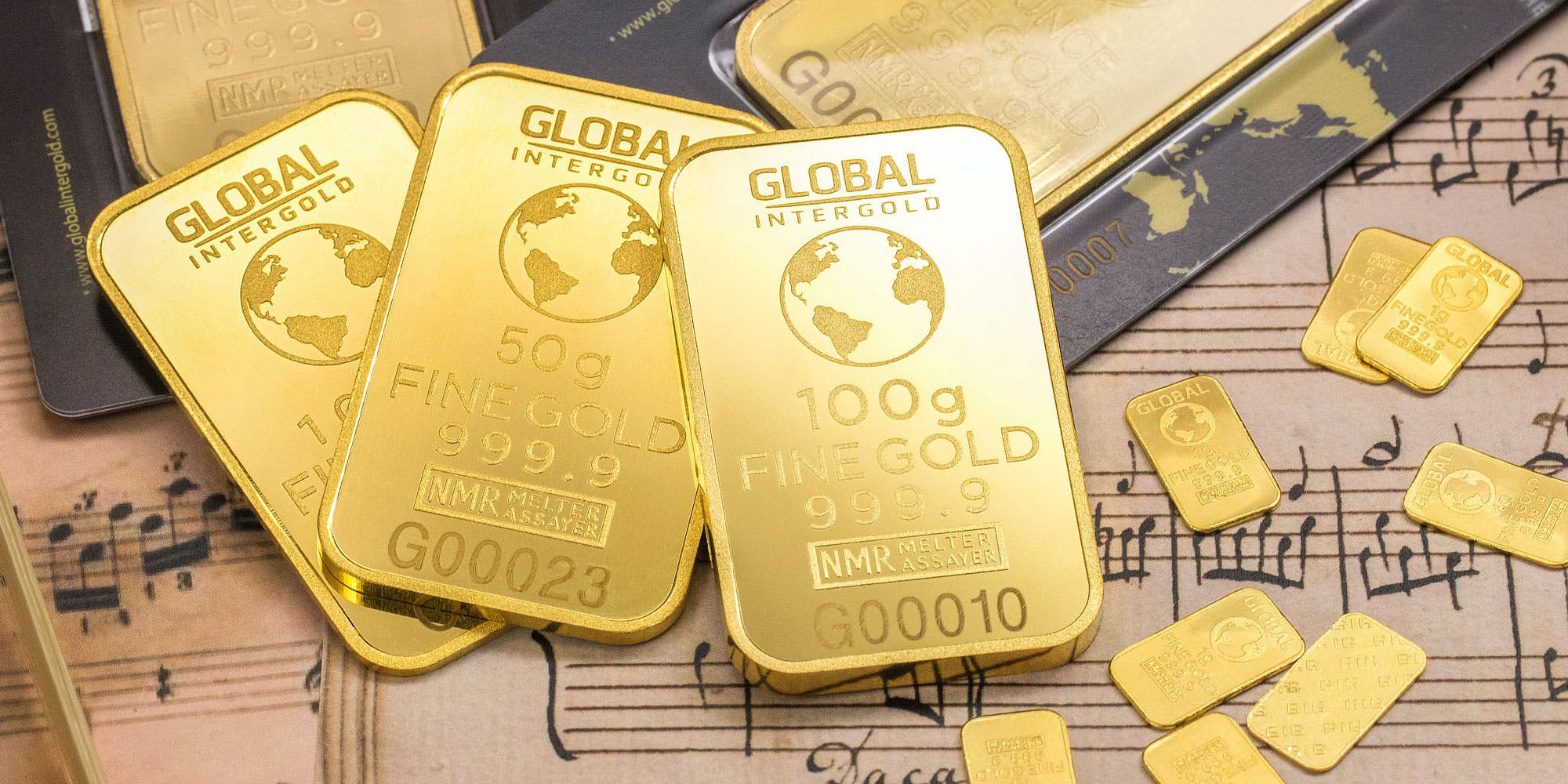 Representative Image (Photo: Pexels)
Representative Image (Photo: Pexels)
KATHMANDU: Gold is trading in the Nepali market at an all-time high of Rs 119,300 per tola (11.664 grams) on Thursday. On Tuesday, the yellow metal was traded at Rs 117,700 per tola.
The price of gold is setting new records in the domestic market every day. Gold prices have gone up by Rs 3,800 per tola in just a fortnight. The yellow metal was traded at Rs 115,500 per tola on November 17.
Gold was traded at $2,044.9 per troy ounce in the international market on Wednesday afternoon. One ounce contains 28.34 grams. The yellow metal traded at $1,936.54 per troy ounce on November 13. This data shows that the price of gold is increasing significantly in the international market. As Nepal meets all of its gold demand through imports, it is natural for the price to increase in line with the international market.
Why is gold glittering?
The world economy has faced a series of obstacles over the past two or three years. The global economy was hit hard for a long time due to the COVID pandemic. After the impacts of COVID started subsiding, the Ukraine-Russia conflict began, and now we are seeing the Israel-Palestine conflict. These unfavorable incidents caused bank rates to spike and affected the global supply chain. As a result, investors turned to gold, which is regarded as a safe-haven asset. The number of people buying gold is increasing because it is not directly affected by war and is considered a safe commodity.
“The US rate outlook is the key driver for gold,” Ewa Manthey, commodities strategist at Dutch bank ING, told the Financial Times. “Lower rates are typically constructive for gold because it doesn’t yield any interest.”
Manthey added that fears of an escalation in the war between Israel and Hamas had also contributed to the rise in the price of gold. “Although the risk of the conflict in the Middle East seems to be contained, at least for now, that will keep being supportive for the gold price.”
Manthey sees the gold price surging until the first quarter of 2024.
The gold price is high in Asia as the wedding season has just begun in India. Gold consumption in China has also increased due to New Year and Christmas. The law of economics says that when demand increases, the price automatically rises.
The price of gold is also increasing due to ‘de-dollarization’ in the international financial system. Recently, countries with large economies and politically powerful nations are preparing to use their own currency instead of the US dollar for foreign trade. Russia, China, Iran, Brazil, India, and other countries are in intense ‘lobbying’ to use their currency instead of the greenback.
Many countries are buying fuel in their own currency. If the world goes into full ‘de-dollarization,’ it seems likely that it will further affect the price of gold. As a result, buyers are putting their money in gold in the hope that it will increase tomorrow.
The reason for the rise in gold prices in countries like Nepal is also due to the devaluation of the domestic currency. Nepal’s foreign currency exchange rate is continuously decreasing. On Wednesday, Nepalis bought a dollar by paying Rs 133.64.
Although the price of gold has been continuously rising, its consumption has not declined in the domestic market. According to the Department of Customs, around 200 kg of gold worth Rs 1.65 billion was imported into the country in the first month of the fiscal year 2023/24, i.e., mid-July to mid-August. Gold imports nearly tripled to around 500 kg in the second month, i.e., mid-August to mid-September.
Nepal has imported gold worth Rs 10.28 billion in the first four months of 2023/24, according to the department.


